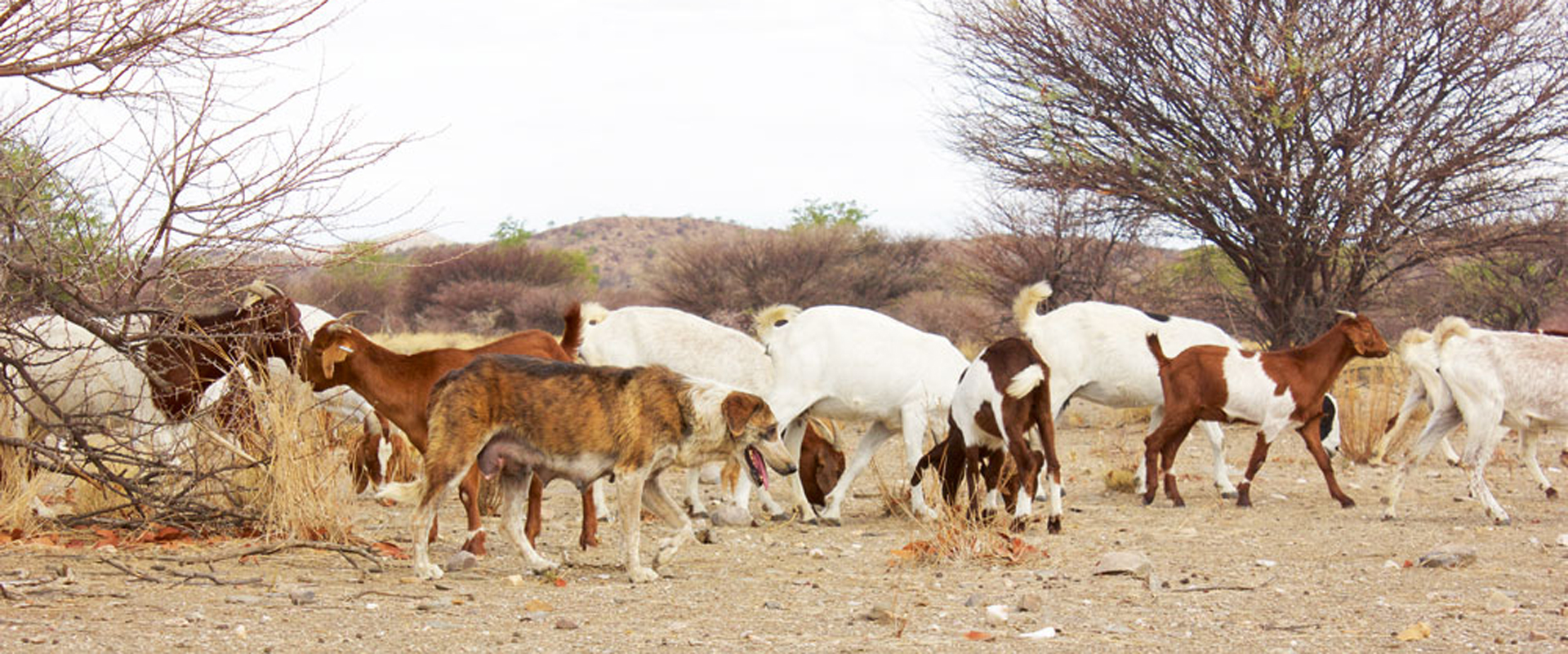
The Nama – Denizens of the south
March 14, 2017
Local knowledge and local dogs
March 20, 2017Text Bill Torbitt | Main photo Ewen Roberts
WHY DEAD VLEI IS SO DEAD
Nearly a thousand years ago, the Tsauchab River, which used to feed the vlei as well as the better-known Sossusvlei, diverted its course, leaving Dead Vlei literally high and dry. The once fairly plentiful water supply that fed the camel-thorn trees growing in the pan ceased, the clay floor of the vlei set like a sheet of concrete, and the trees died and dried out. The vlei is not entirely dead though – some small plants survive from the moisture carried in by morning mist. Be aware that when you are posing for a photograph sitting on one of the grey dead branches, that it is older than nearly all the existing buildings in Europe.
THAT TREES DEFEND THEMSELVES AGAINST BEING EATEN BY GIRAFFES
You may think that giraffes have a unique advantage in being able to reach the juicy upper leaves of acacia trees. Good news, except for the tree. However, the trees can defend themselves by infusing their foliage with a chemical that gives it a bitter taste, and they can even ‘warn’ other trees to do the same by releasing a wind-borne chemical message!
THAT ELEPHANTS DON’T GET DRUNK
At least not from eating fermenting marula fruit, a legend probably promoted by the manufacturers of the popular liqueur. Elephants prefer their marulas fresh. However, they are not necessarily teetotalers – a herd of Asian elephants once got at the rice-wine stock of an Indian village, then went on the rampage and killed several of the unfortunate villagers.
WHAT CAUSES FAIRY CIRCLES?
These are strange barren circular patches, found on the arid grassy plains of Namibia. They are the subject of much superstition and many legends. Two dominant explanations have emerged. Some researchers blame regularly-spaced social insect colonies, like termites, munching their way through grasses until they reach some sort of barrier, perhaps a competing colony. Others argue that, instead, it’s the plants that are competing with each other for water and other resources. New research suggests that both mechanisms might be involved. Perhaps, for the sake of tourism, it is better to stick with the legends.

HOW THE AARDVARK, AARDWOLF, ANTEATER AND ARMADILLO DIFFER
As animals they are totally unrelated, but they have in common a diet almost exclusively of ants or termites. Perhaps by convergent evolution they all have long sticky tongues for sucking up insects. An aardvark is the sole representative of the order Tubulidentata. Despite its Afrikaans name, it is unrelated to pigs, regardless of its vaguely pig-like snout and ears. The name of the order refers to its unique hexagonal tube-like teeth, which grow continually throughout its lifetime. An aardvark can dig into a termite’s nest at great speed, and with its tongue can devour tens of thousands of ants or termites at a sitting.
An aardwolf is also not a wolf – it belongs to the hyaena family, albeit in a subfamily all of its own. It is a shy nocturnal creature that also devours vast numbers of termites every day. It poses no threat to farmers or to their livestock.
Anteaters are related to sloths and do not occur in Africa – they are New World animals, as are armadillos. However, the unrelated scaly anteater or pangolin occurs widely throughout Africa and Asia, including Namibia. They too form a ‘stand-alone’ biological family – the Manidae. They are unusual mammals, as they are covered with keratin scales, resembling ‘walking pine cones’. They do not have teeth, but dig into termite nests with their powerful front claws. They are the most trafficked mammal in the world, being hunted for their meat, and also because they are in demand in Asia for their ‘medicinal’ properties.
This article was first published in the Flamingo February 2013 issue.


